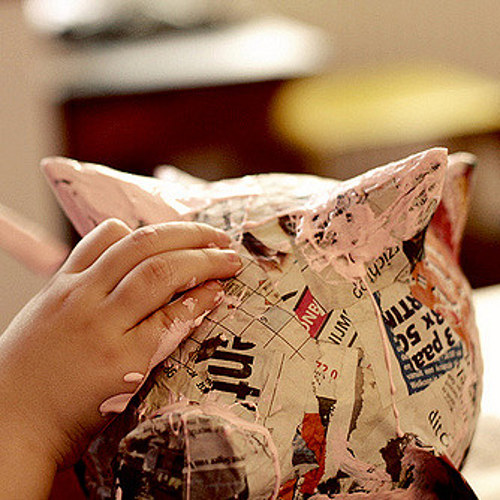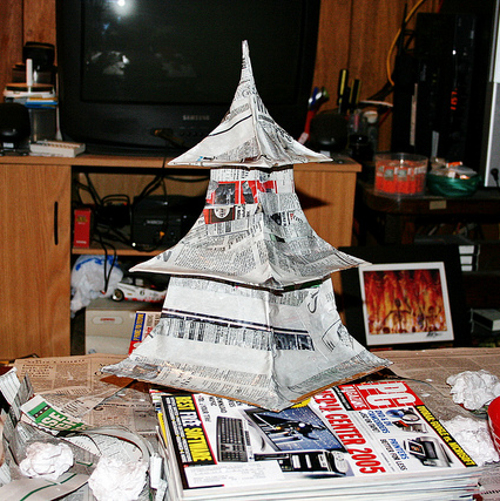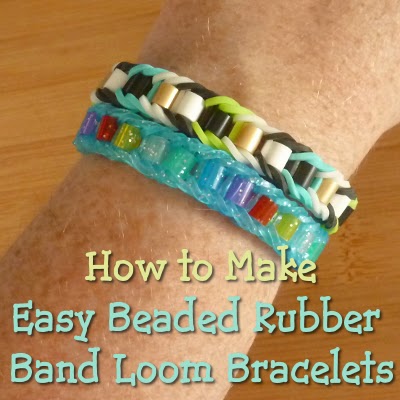15 Paper Mache Tips and Techniques to Learn From

Paper mache, also known as papier mache, is a fantastic paper craft that you can do even on a very small budget. This craft only needs a few tools and items so you can get started. If you're new to this craft or even at an intermediate level, you'll really benefit from these 15 detailed paper mache tips and techniques.
It's amazing how just paper, adhesive and some imagination provide all you need to create anything from paper mache that you can think of. It is just as suitable as a fun activity for kids as it is for adult crafters and artists too.
There are all sorts of flat items and three dimensional models that you can decorate or even build from scratch using this paper craft. Many people start by making simple masks for Halloween, Mardi Gras or even cosplay costumes. I prefer to make items that I can then display as unique home decor.
Note: This post may contain affiliate links for which I can be compensated.
15 Brilliant Tips for Paper Mache That You Can Apply Today in Your Crafting
1. Start With Easy Beginner Paper Mache Projects: Don't Try to Run Before You Can Walk
If you are new to this craft, aim to begin with some easier projects so that you can really just get used to the process of making paper mache first.
An example of a project that is easy to start with is to cover the lid of an old jewelry or trinket box. Another idea is to decorate the frame around a picture, photo or even a mirror which is very easy to do. Just make sure to cover up the glass before you start so that it is not spoiled with glue.
When choosing some easy paper mache projects, look for relatively flat surfaces that you can cover over using this paper and glue technique. A surface which is bumpy will be more difficult to work on to start with.
You could look for an old hardcover book to decorate and work over the front of it, just so that you get used to and confident with this rather unique crafting process.
2. Start Small So You Can Finish Your First Projects Sooner and Get a Sense of Achievement

Image Credit: Shared by Mel on Flickr with a CC License
The size of the project that you choose does matter with this craft. Projects that are large and ambitious may take up too much time and end up frustrating you if they don't go to plan.
Opt for a smaller sized area to work the paper mache technique over and I recommend no larger than a standard A4 or letter size for beginners to work with.
3. Get Organized So this Sticky Craft Doesn't End Up in a Mess
Paper mache can be very messy. You can contain this mess if you organize yourself well before you start.
I prefer to work on a large tray; this has the added benefit of being ultra-portable to move around so I can always sit myself in the best place for natural light.
If you are especially worried about your work surface and the risk of it getting dirty, an inexpensive and throwaway plastic or vinyl table cover is a good idea.
4: Choosing and Using Paper to Use With Papier Mache
Paper mache gradually builds up over many layers of paper. The more layers that you have, the tougher the finished item is. Strength and durability is especially important with an item such as a costume mask that you may want to wear more than once.
My recommendation is to save your best papers and prints for the very top layers where they will be visible. This can help you to cut the cost of this craft and save you from wasting your best paper supply.
Newspaper or print is an ideal material to use for the initial layers of paper, forming the base of your design. Decorative scrapbook papers are what I like to use on the final layers.
5. How Many Layers of Paper Will Your Paper Mache Project Need?
The amount of layers will depend entirely on the type of project that you are making. An easy and simple craft project such as decorating a flat book cover or a frame may only need 2-3 paper layers in total over the top.
A more complex and elaborate design such as a three-dimensional sculpture may need several layers of paper until you get to your desired thickness.
Sculptures need more layers to make them nice and robust. You can work over scrunched up newspaper to bulk the project out and shape it first.
6. Tip on Organizing Your Paper Pieces
It can really help if you organize all your torn up paper pieces before you start.
I like to place torn newsprint in one large bowl and then decorative papers in separate bowls according to pattern or color themes.
Although you can end up tearing much more than you actually need for the project at hand, it is a lot easier to tear up the papers while your hands are still clean and dry. Keeping them separated in open bowls makes pieces easier to grab while working too.
7. Should You Cut Or Tear Papers for this Craft?
You can either cut or tear papers into smaller sizes so they are ready to glue on to your project.
Torn edges have a much softer look to them when glued and colors and patterns can blend together better than cut edges. They also stick down well giving a nicer finished appearance to your project.
Which style you choose may depend on the actual look you are after. For initial layers that will be covered over, it makes sense to do whatever works faster. It's the final layers where you want to take the most care over how the paper application actually looks.
8. Advice on How to Apply Your Paper Mache Glue

Image Credit: Shared by Suzette on Flickr with a CC License
Since I really don't like to get my hands messy, I prefer to use an old brush to paste the wet adhesive or white glue straight on to the project.
A brush helps to keep my hands clean for picking up pieces of paper as I work. It also helps with spreading the glue on evenly. Occasionally a bristle may work free of the brush which is one of the downsides of this choice.
Instead of a brush for applying the glue you can also use a piece of sponge, a small cloth or even your fingers if you enjoy getting messy.
My technique is to apply the adhesive to a small area of the project before placing a piece of paper on it. I then use a brush to spread glue over the top of the torn paper and then repeat with the next piece of paper slightly overlapping the edge of the previous one.
This process is something I continue until the end of a layer. Then I allow the project to dry and use the same process for the next layer. You may use this technique or find your own preferred way of working this craft.
9. Experimenting With Different Types of Papers
If you choose to use finer papers, you should end up with a much smoother result. The downside is that the thinner the paper, the more risk that it will tear where you don't want it to.
Newsprint works well for the base layers because it is quite thin. Over the top of this you can use tissues, craft papers and even special decoupage papers which are designed to work as finished layers for projects.
If smooth is not your desired look, however, there are other types of papers and some that have bumpy or rough textures to work with. I have fun experimenting with different types of papers and even looking out for free wallpaper samples just to get the specific result that I'm looking for.
10. Placement of Papers on Your Paper Mache Projects
When you place paper pieces down on to your papier mache project, try to put them in slightly different directions and angles as you work. Doing this will add in more strength and stability to your completed item which is more important with three-dimensional sculptures.
11. Use Common Objects to Cover to Get a Feel for 3D Sculpture Projects

Image Credit: Shared by Mark on Flickr with a CC License
When you begin to make three-dimensional items, you can start by working your pieces of paper and glue over common objects such as bowls, balloons and other items to create an initial shape.
If you don't want to damage the object underneath, you can cover it over with some plastic cut from a bag or wrap. You can use any non-cling type of plastic which you can secure into place with some masking tape.
Prop up your container on top of other items such as heavy cups or bottles so that you have an easy way to reach all the edges and sides as you work.
12. Painting and Varnishing Completed Paper Sculptures
Make sure that your project is completely dry before you attempt to paint or varnish over it. In the same way, I prefer to dry each layer off before starting on a new one.
Some crafters prefer to work on top of the wet layer beneath but I believe this compromises the long-term strength and durability of the finished item.
Not allowing layers to dry completely before working on the next can potentially shorten the life-span of your completed work.
13. Working in Batches Can Save Time
Often I will start another craft activity while the project is drying. If you make lots of paper mache, it can help to work in batches.
You can do this by working on layers of multiple items in one session and then allowing them all to dry overnight.
On a warm and fine day, you can dry your projects outside or leave them so that they can air dry indoors instead.
14. What Type of Paint Should You Use for Paper Mache?
Acrylic craft paints available in either bottles or tubes work very well on your completed projects.
You want to mix these up with a small amount of water to thin them out a little and apply the paint on with a brush.
You can choose from a bristle brush or a foam brush. The downside with a bristle brush is that occasionally the bristles fall out into your work.
15. A Note On Varnish
Whether you choose to add paint over the top of your design or not, using a varnish coat or a sealant such as Mod Podge will help to protect your completed paper mache item and prevent chips from forming and spoiling your design.
Imagine Your Paper Mache Project First, Then Make It
Paper mache is a craft that anyone can enjoy. It is not hard to do and it is also inexpensive if you recycle paper used from old magazines, newspapers and even books.
You can use it to decorate objects that you already have around the home such as mirror and picture frames and trinket boxes. Or you can use it to build a sculpture completely from scratch.
It is easy to decorate the surface of items such as ornaments, bowls and keepsake boxes and that is a great way to start. Forms such as balloons and paper twisted and taped into place allow you to make three-dimensional sculptures.
I hope these 15 paper mache tips have inspired you to either make a start or take this craft pastime just a bit further.
Whatever you want to make using this craft, it is an inexpensive and fun activity for creating hand crafted items.
Related Content You Should Also Love:
Page Last Updated:



Great article, thanks for all the information. I am making a paper mache sculpture and I discovered that if I use a layer of white tissue paper on top of the newspaper layer, the new layer will be smoother and lighter colored. I would not do the whole project using tissue paper, since it is so thin, but it makes a great final layer. Just my 2 cents.
ReplyDelete